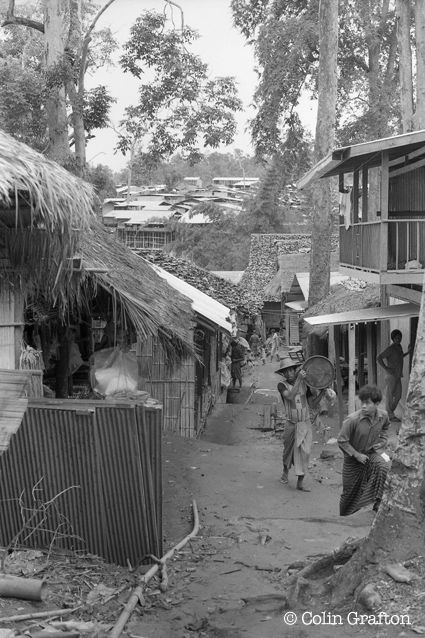


































Karen 1975
Click image to view
Karen at Wan Khao, 1975
After leaving Cambodia on 7th April, Tony Malcolm and stayed in Bangkok for a week or so. We met up with Sam and Egon, who invited us to a Japanese sushi restaurant. It was the first time for me. We also met up with John Garth and a number of other ‘barang refugees’.
I decided to get out of the city and head for the Burmese border to see what was happening with the Karen. Tony and I went to Wan Khao, the ‘capital’ of Karen territory. It was not so easy to find and its location was often changing, depending on the bombing activities of the Burmese military government at the time. The one constant was that it was right on the Thai border, offering some measure of protection from attack. The Karen had been fighting for autonomy since 1949. The British favoured the Karen for their loyalty and reliability, and had apparently promised them a ‘Karen State’ after ‘Independence’.
However, early in 1949, the new Burmese government arrested the Karen leader of the armed forces, General Smith Dun, and replaced him with radical Burmese anti-Karen nationalist Ne Win. Continual attacks against Karen-dominated townships around Rangoon and the arrest of Karen political leaders led the Karen National Union to declare armed struggle, and the world's longest running civil war began.
We found Wan Khao to be a bustling frontier post for all kinds of goods, subject to a taxation fee. One of the commodities was precious stones. We talked to the local commander and he charged me with delivering a message to Margaret Thatcher: “Do not forget the British promise to their Karen friends!” Even if I had been going back to England, carrying out this mission would have presented difficulties. But I felt guilty and sad that these people had been ditched by the British government after the service they had performed.
I went to Wan Khao for the third and last time in 1980, after working in the Cambodian refugee camps on the Thai border. Once again, it was elusive and had moved from its previous site. As for its present location, nobody seems to know. Perhaps it has totally disappeared. It is not the Mon part of Sankhlaburi which is called ‘Wangkha’ — this was definitely a Karen enclave.